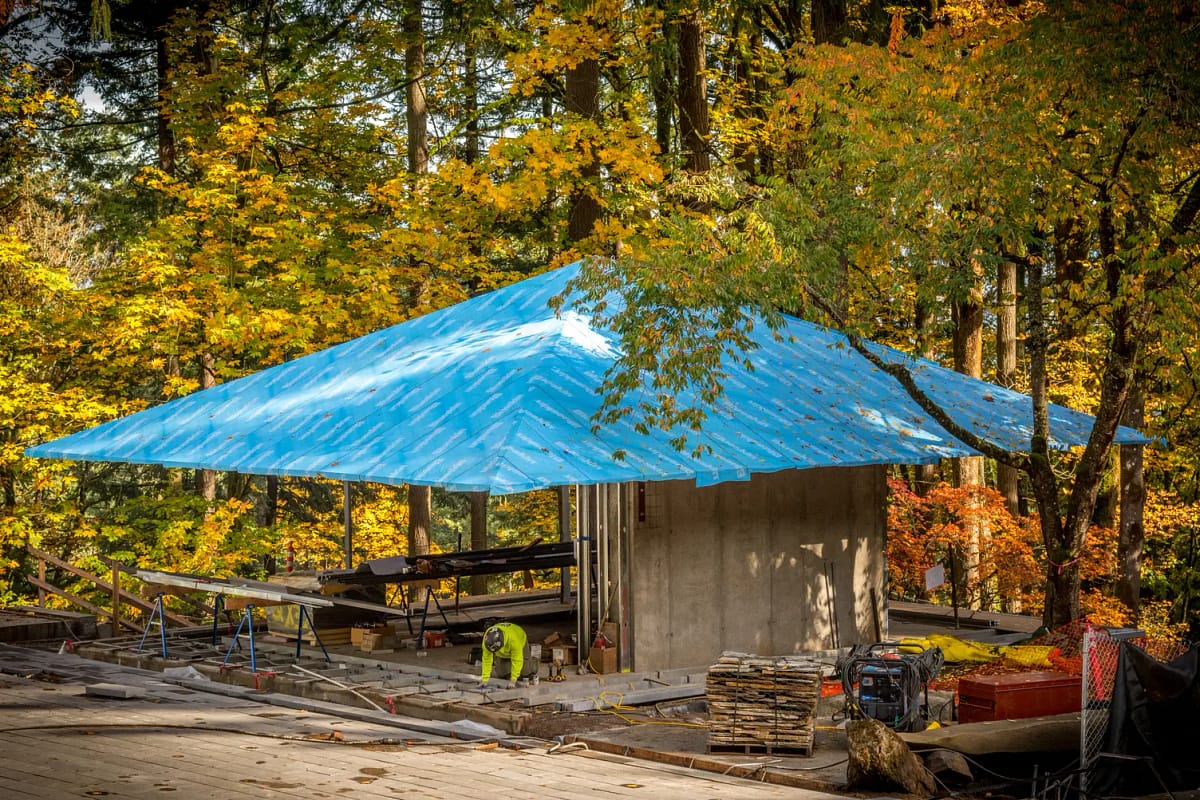Since 1963, the number of guests visiting Portland Japanese Garden has grown from 30,000 visitors per year to almost 300,000. In 2007, the Garden’s Board of Trustees began to plan in earnest for the long-needed expansion at the Garden, and launched an international design competition in 2010. One submission from Kengo Kuma & Associates clearly exceeded the others in comprehensively addressing the site’s challenges, while keeping focus on the original garden spaces and understanding the unique aesthetics of a Japanese garden in a native Northwest forest.
“The proposal combined beauty, native materials, Japanese craftsmanship and design, and environmental sustainability with the highest level of functionality and comfort for the people who would use the spaces. The architect who submitted the proposal was Kengo Kuma, one of Japan’s premier designers,” said Stephen D. Bloom, Chief Executive Officer of Portland Japanese Garden. In the past, Kengo Kuma has been entrusted with many culturally sensitive designs around the world, including beautiful iconic buildings valued especially for their appropriateness to site and function. Kuma and his team created a design for Portland Japanese Garden that maximizes every inch of space on the Japanese Garden’s hilltop, answers the Garden’s operational needs, and is beautiful in a particularly Japanese, understated way.

The monzenmachi or “town before the gate” concept preserves the essential experience for each individual visitor, spreading out needs such as admissions, information, education, gallery space, events, orientation, restrooms, shopping, eating, sitting, and sharing experiences—outside of the 5.5-acre Garden. Temples in Japan traditionally use the “gate-town” approach to preserve the sanctity of the precincts within the gates. The Garden’s new buildings will be designed according to the objectives of traditional Japanese architecture, in which the design blends seamlessly into the landscape.
The original garden space will remain untouched and unaltered. After the new buildings are completed, the Garden’s existing Pavilion can be used more efficiently for extended exhibitions and events, such as the annual Moonviewing. The current gift store space will be repurposed for volunteer needs, with lockers, break room, tool storage, and an office for the Assistant Volunteer Coordinator. As the volunteer corps grows at the Garden, this kind of space and access for volunteers is key to ensuring the Garden’s long term success.
To welcome visitors with a prelude of experiences to come, the welcome gate will be moved down by the parking lot. There will also be three new gardens to welcome visitors. In the process, the Garden is planting more than 200 new trees and shrubs along the walking trail leading from the parking lot to the Garden while removing invasive non-native species.
By reusing existing space and optimizing built-over areas, the total Garden building footprint will increase by 11,340 square feet.
The original five gardens blend into each other effortlessly, linked by the water that runs through them—including the dry “waves” raked into patterns in the Sand and Stone Garden. In the new gardens, which will surround and protect the original Garden, the flow of water will provide a connection throughout the entire twelve acre hillside. The breathtaking new spaces will offer a taste of diverse aesthetic design.
“Our mission is to serve as a resource for professionals and amateurs. We’re in a unique position—thanks to our history—and what we want to do is share our success in conveying the layers of meaning and relevance of Japanese gardens to contemporary audiences. Expanding our class offerings and developing them into an integrated curriculum for local, national, and international learners is a priority. We have Diane Durston, our Curator of Culture, Art, and Education, and her team hard at work in this area, so that when the space is ready, we can commence,” said Bloom. The Garden is a magical place any time of year, and adding the frame of Japanese culture, art, and education will help even more people enjoy the special place in a fresh, new way. This full article can be seen in the #3 issue of the 2017 Journal of the North American Japanese Garden Association (NAJGA) expected to be out early next year.


